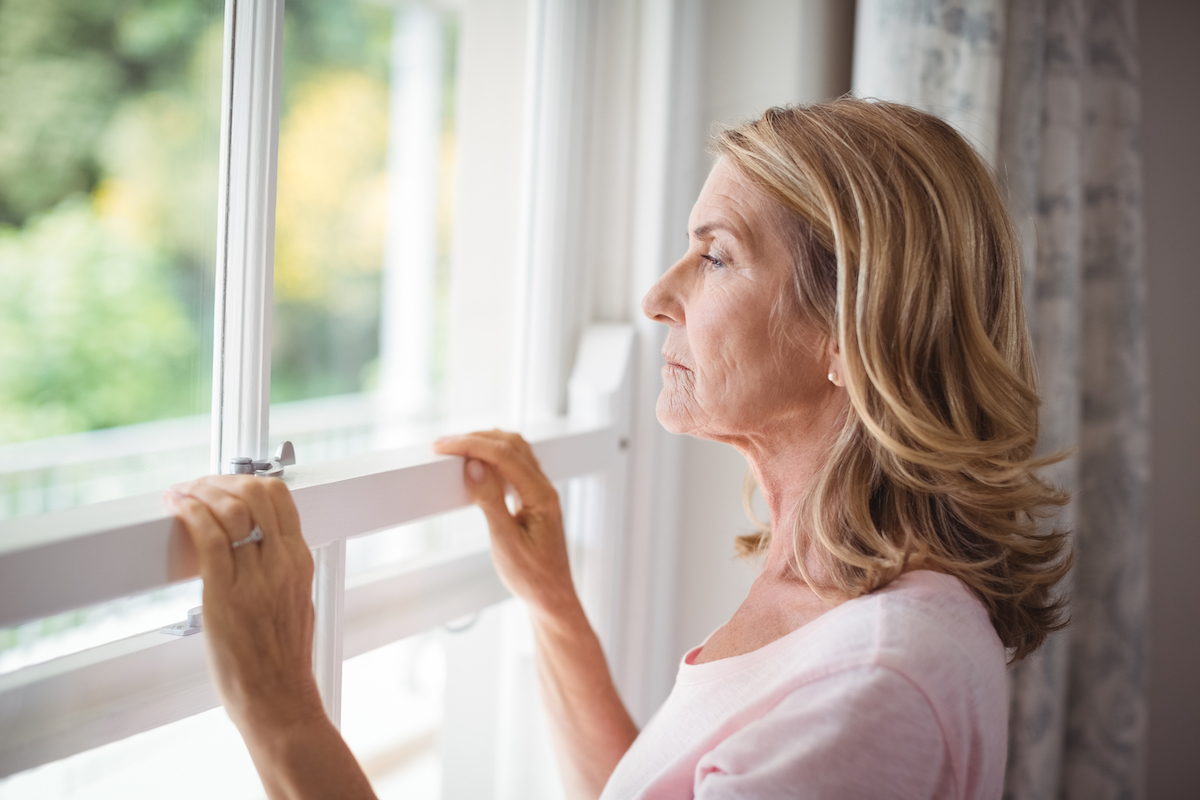
A lot changes with the seasons. From the weather and types of activities we participate in to the foods we eat and even our overall mood, our routines change depending on the time of year. But for some, these changes can cause seasonal depression or Seasonal Affective Disorder.
Seasonal depression in seniors is more common than you may realize. According to the Cleveland Clinic, “about 5% of adults in the U.S. experience [seasonal affective disorder]…About 10% to 20% of people in America may get a milder form of the winter blues.”
So, what exactly is seasonal affective disorder? Our team at Franklin Park® Senior Living is sharing what seasonal depression is and what you can do to get through the more challenging months.
What is Seasonal Depression?
The American Psychiatric Association states, “seasonal affective disorder is a form of depression also known as SAD, seasonal depression, or winter depression. In the Diagnostic Manual of Mental Disorders, this disorder is identified as a type of depression – Major Depressive Disorder with Seasonal Pattern.”
Unlike general depression, seasonal affective disorder happens only during certain times of the year and resolves itself. Most commonly, it occurs throughout the winter months. According to the Cleveland Clinic, “seasonal depression gets worse in the late fall or early winter before ending in the sunnier days of spring.” This is due to the change in weather and daylight hours. As the fall season sets in and winter approaches, the temperatures become cooler, and the hours of daylight decrease each day.
It is common to see seasonal depression in seniors since they are at a higher risk of isolation, especially during the winter months.
Symptoms of Seasonal Depression
Symptoms of seasonal affective disorder can vary from person to person and range from mild to severe, usually progressing with the season. Many of these symptoms are similar to those of major depression and can include the following:
- Losing interest in activities that you once enjoyed
- Having low energy or feeling sluggish
- Changes in sleep – whether it be insomnia or sleeping too much
- Changes in appetite – commonly overeating and experiencing carbohydrate cravings
- Weight gain
- Having trouble concentrating
- Feelings of guilt or hopelessness
Getting Through the Tougher Months
Short of moving to a place with warm weather and/or mild winters, there is not much you can do to change the weather or stop the seasons from changing. With this being said, though, there are a few ways you can lessen the weight of seasonal depression and reduce some of your symptoms.
Let There Be Natural Light
“Spending time outside or near a window can help relieve [seasonal affective disorder] symptoms (John Hopkins Medicine).” Even if it is cold outside, letting the natural light into your home through a window can help brighten your space and make it feel less dark and depressing.
Or, Try Light Therapy
The American Psychiatric Association states, “light therapy involves sitting in front of a light therapy box that emits a very bright light (and filters out harmful ultraviolet (UV) rays). It usually requires 20 minutes or more per day, typically first thing in the morning, during the winter months.”
Vitamin D Supplements
One of our primary sources of vitamin D comes from the sun. When the sun’s ultraviolet rays hit the skin, this triggers vitamin D synthesis. Because many of us have limited exposure to the sun during the winter months, individuals experiencing seasonal depression likely also have a vitamin D deficiency.
Taking a vitamin D supplement may help relieve seasonal affective disorder symptoms. NOTE: It is recommended you speak with a healthcare provider to determine if a supplement is right for you.
One of the benefits of living in a senior living community is that it is easier to stay connected and engaged with other people, no matter the time of year. Franklin Park® Senior Living communities make it easy to socialize with peers and stay active through stimulating activities and resort-style community amenities.
We invite you to visit our blog for more information and resources around health, wellness, and senior living.
